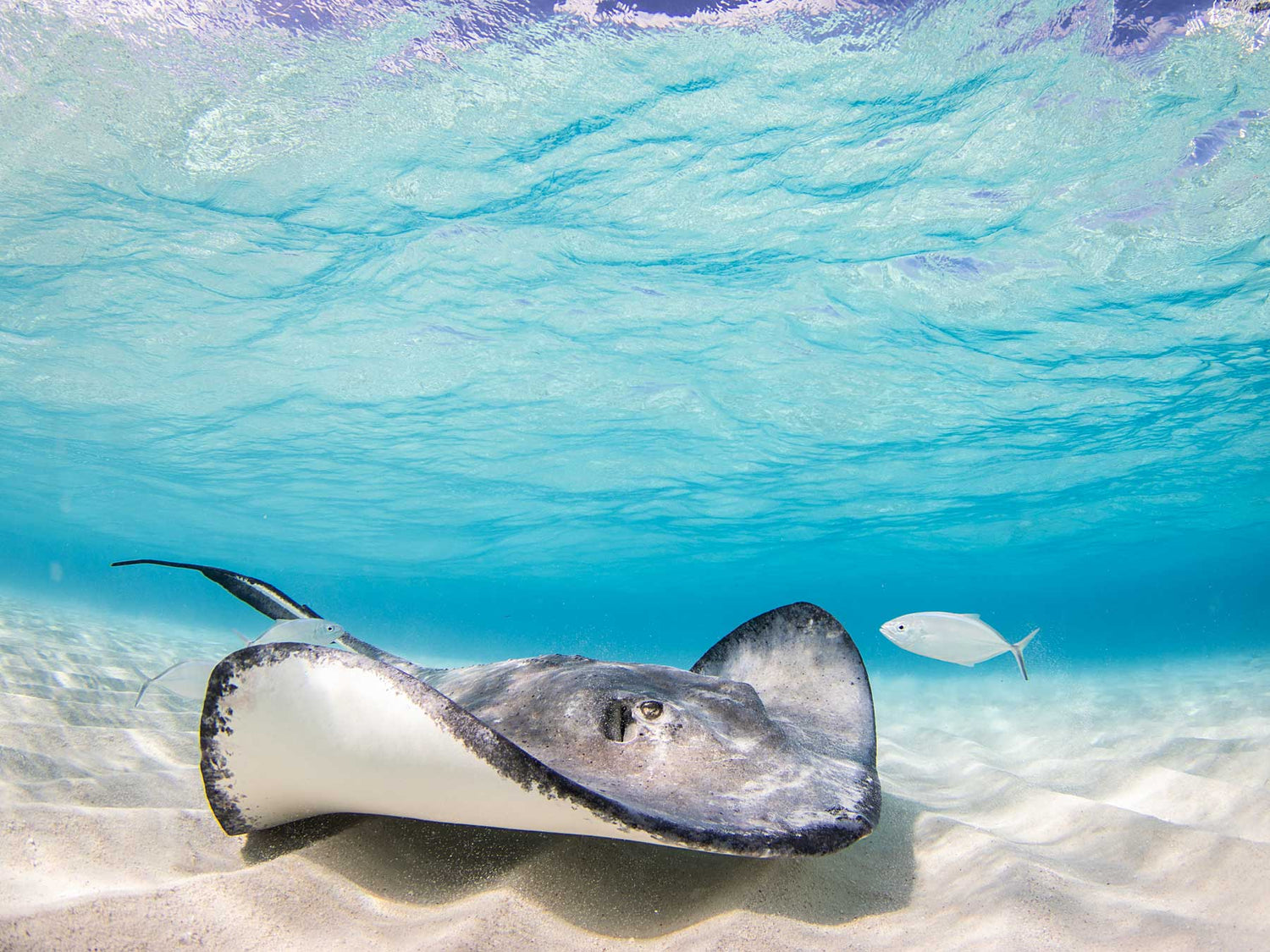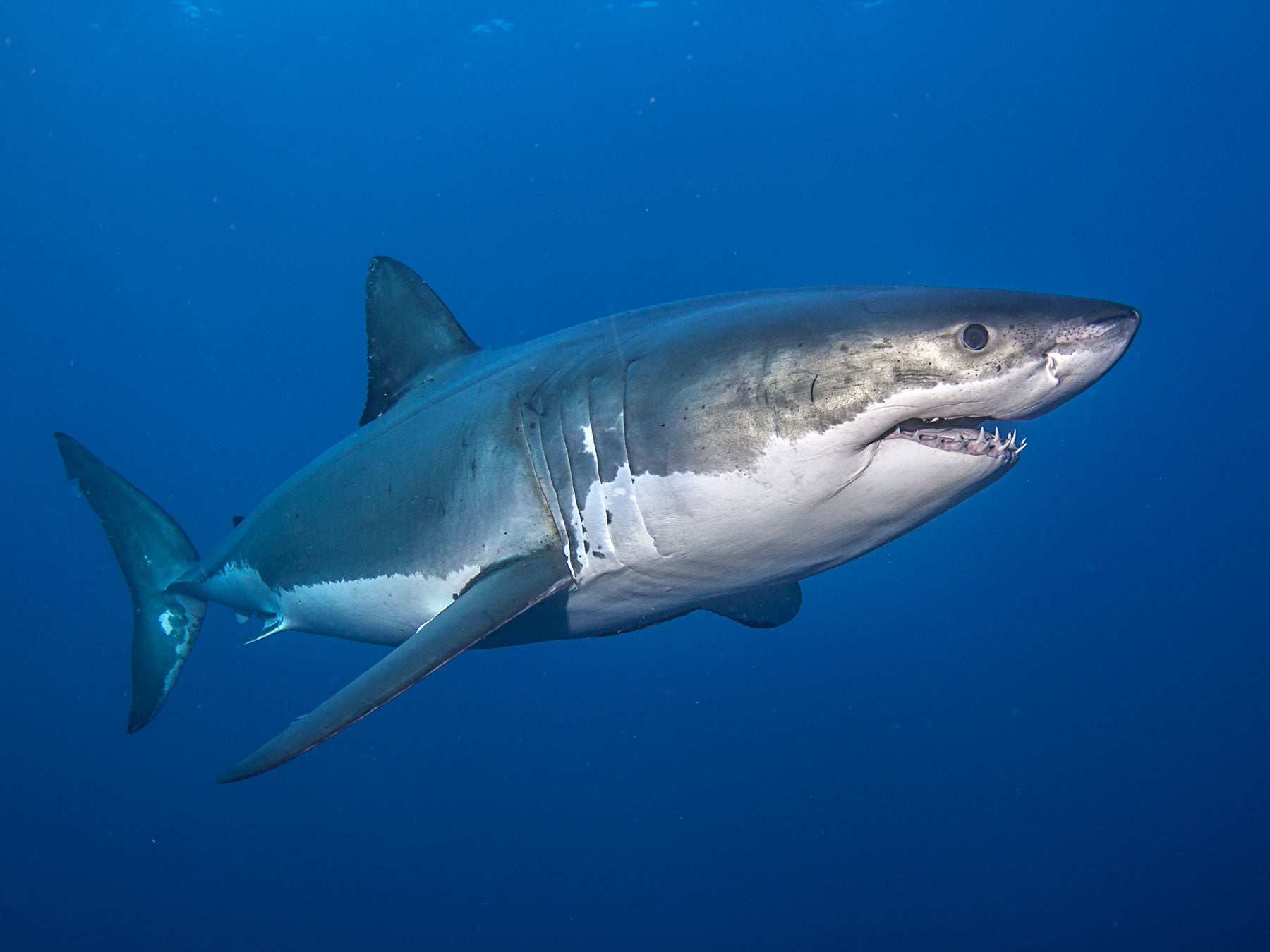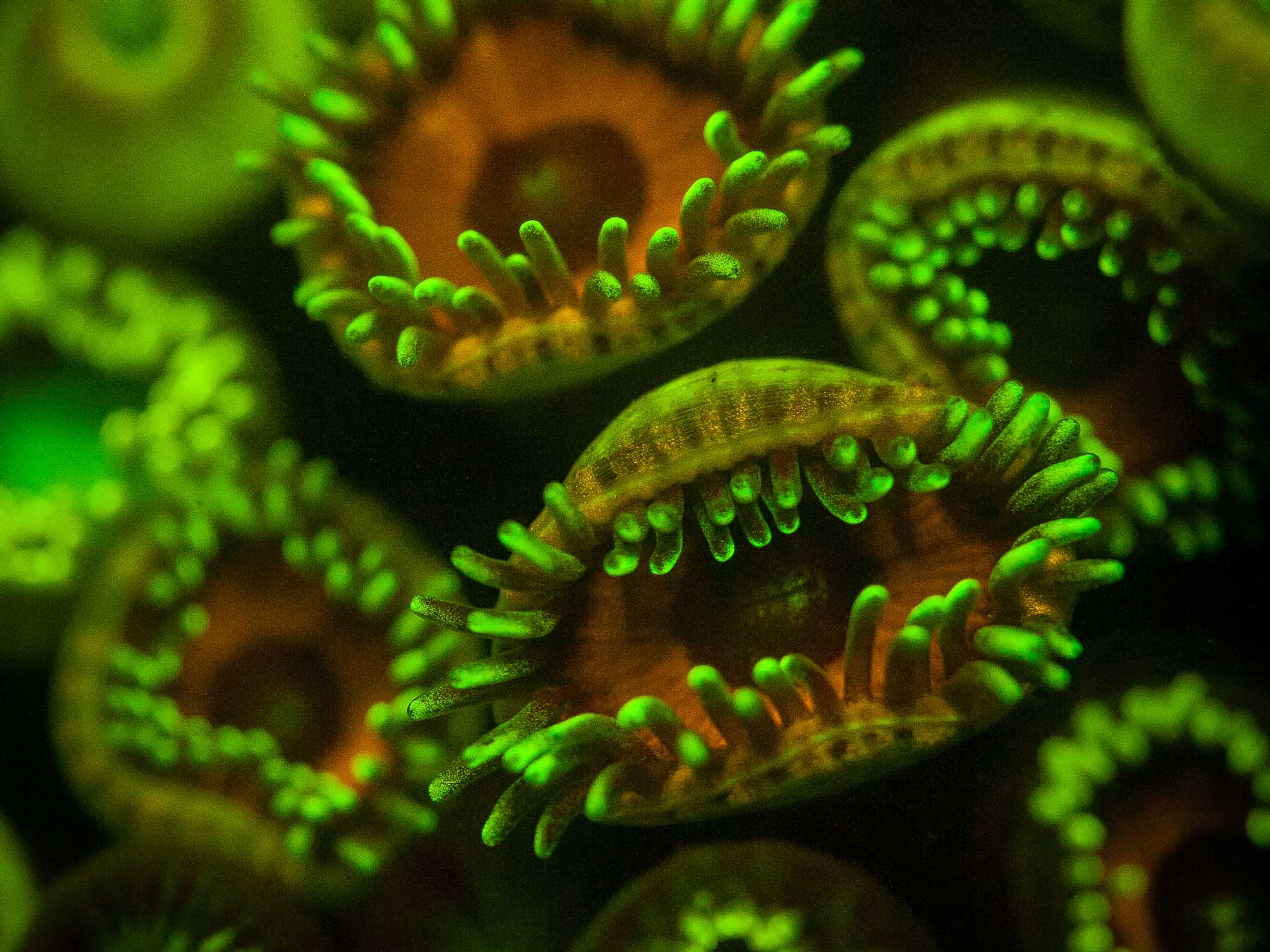They say that local fishermen would stop in this area of Grand Cayman's North Sound to clean their catch, throwing the guts and remains back into the waters. Enterprising dive masters noticed that stingrays were attracted to the sounds of boat engines and started feeding them.
Now Stingray City is a regular tourist attraction with most operators running weekly trips there. We're focusing exclusively on the dive site which has a profile of about 12 feet depth (4 meters)- there is also a much shallower site where visitors wade into the water which is not as conducive to underwater photography.

A circular fisheye lens gives a beautiful 180º perspective of the landscape and captures the dynamic nature of the scene.
Where
Grand Cayman, Cayman Islands
DSLR + Mirrorless
ISO: 100-200
Mode: Manual camera if using flash; Manual, Program or Shutter Priority if shooting natural light
Aperture: f/11 to f/16
Shutter Speed: 1/250 or faster to avoid motion blur; when using a strobe use the fastest shutter sync speed supported by the camera
Lens: Super wide fisheye or rectilinear
Point + Shoot
ISO: 200 or lowest available
Mode: M Manual if available; Shutter priority (Tv) or Program (P) will also work
Aperture: f/8 to f/18 depending on the brightness of the scene
Shutter Speed: 1/250 or faster to stop motion
Focal Length: Zoomed out to full wide (24mm to 28mm); super wide conversion lenses will work well here

Human interaction is a big part of Stingray City, where the rays will get up close and personal looking to be fed.
Technique
The waters here are super shallow and full of light, but it can get kicked up pretty quickly and turn into a sand storm. If possible get a private boat with the fewest passengers possible and choose a time of day that the site is less busy.
When Stingray City was a new thing, magazine covers often featured images of the activity that were bright, beautiful, and full of action. This is still the typical image, shot as close-focus wide angle with a stopped down lens and a fast shutter with flash fill. There is so much light bouncing off the sand on a typical day here that you have plenty of light to work with and therefore lots of options.
More recently we have seen creative approaches to the same area with over-unders, particularly on days where the sky is dynamic with lots of clouds or even a sunrise or sunset. It isn't often that we have such shallow bright dive sites, so the difference in exposure between the sky and the ocean floor will be much closer than usual. This makes over-unders much easier for your camera to capture.
Try to keep the sun at your back when shooting over-unders or natural light photography (without strobes).

Flash photography really brings out the depth and detail of southern stingray.
Strobes
Stingray City can be shot with or without strobes. If you use them, be sure to use very long arms stretched out wide enough. Watch out for sand being stirred up.

The sand can quickly get stirred up when you're in a group of a lot of divers. Try taking a private charter if you want photos with crystal clear water and that classic flat, sandy bottom.
Additional Reading
How To Get the Best Shots When Shooting Wrecks
Black and White Conversion for Underwater Photography
Natural Light Photography Underwater













